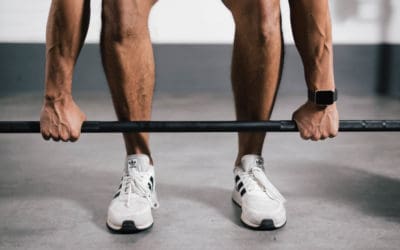Train with a good strength and conditioning coach or certified personal trainer and you can pretty much guarantee that the posterior chain will be discussed in your first session.
When you understand the posterior chain, it becomes obvious why this is. Often referred to as ‘the powerhouse’ – the posterior chain is the very foundation of strength in our bodies. Put simply; it’s what keeps you upright.
In this highly detailed guide to the posterior chain, we’ll take a look at this important group of muscles in detail, including:
- Which muscles ‘the posterior chain’ refers to
- The problems that can come from a weak posterior chain
- Firing patterns through all the muscles of the posterior chain
- A huge range of posterior chain exercises suitable for different people and conditions
We’ll also answer some common questions about the posterior chain.
The information is this guide and the many supporting articles has been carefully put together by the team here at Fitness Lab in London. It was then reviewed by the lead physiotherapist and osteopath at our partner business – Movement Clinic. While the knowledge backing this information is exceptional – we always recommend that you seek in-person professional advice if you are facing any issues relating to your posterior chain.
The posterior chain muscles
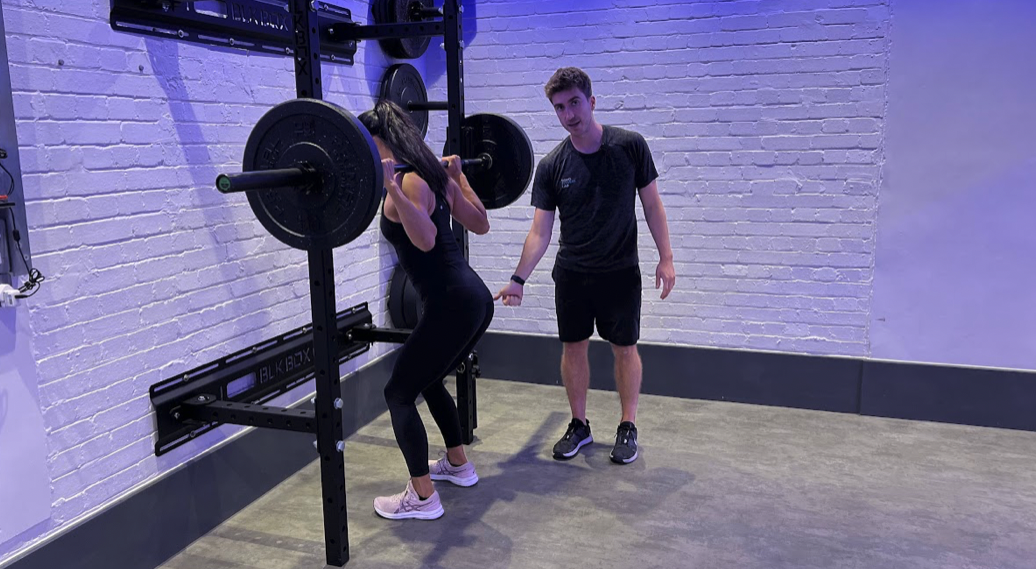
The posterior chain includes muscles from your feet right up to the top of your neck.
In fact, the posterior chain runs from your foot, up through your calves, along the back, through your seat, lower back, along either side of your spine and finishing under your skull.
These muscles aren’t just essential for athletic performance – they’re also a essential part of keeping our backs healthy.
Primary Posterior Chain Muscles:
- Calf muscles
- Hamstrings
- Glutes
- Multifidus
- External Obliques (outer abdominal muscles)
- Erector spine muscles
- Latissimus Dorsi
- Trapezius (upper traps)
- Posterior deltoids (rear delts)
What does it mean to have a weak posterior chain?
A weak posterior chain simply means the muscles that make it up are not as strong as they could/should be.
As you can now see, the body’s largest and most powerful muscles and included in the posterior chain – and these muscles help to hold you upright all day long. The trouble is, most people have a posterior chain that doesn’t work as effectively as it should.
The biggest culprit when it comes to a weak posterior chain? Modern life.
Today more than ever before, we spend more time time in a seated position. As we sit for the whole of the day, the posterior chain is not exercised – and therefore goes on to cause a lot of physical problems – often in the lower back, the knees, the hips, and even the shoulders.
The most common posterior chain problem is weak glutes and mechanic movement of the hips. A weak glute, will result in the opposite hip dropping during the gait cycle (the period of time that the foot is on the floor) and can cause an increase in lower back pain and hip pain with walking or running.
Why is the posterior chain important when it comes to back pain? Well, the primary role of the glute is stabilization and extension of the hip, but to many people focus on the muscles of the anterior chain while they train (which includes the abs and quads). Also, the seated position leads us to be quad dominant.
The implications of having a weak posterior chain are numerous – so we’ve created a whole blog that looks at these issues in more detail – The Weak Posterior Chain.
Posterior chain exercises
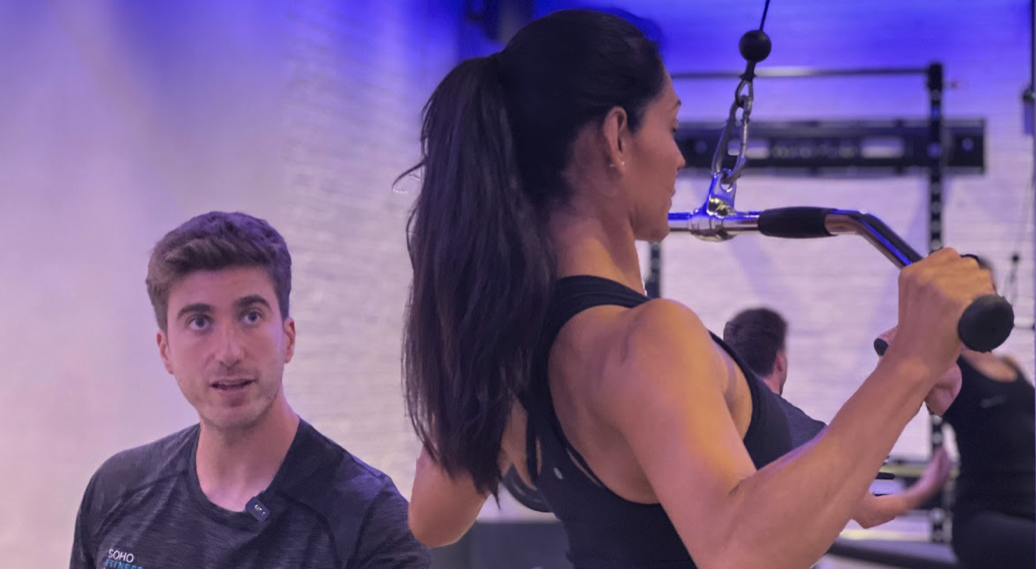
As you’ll soon find out as you read on, there are a huge number of exercises that can go towards creating a strong posterior chain.
However, it’s useful to start with the basics.
Because of a sedentary lifestyle your glutes need a wake up call. A quick and simple lower body workout and warm-up will go a long way toward getting things moving and helping to prevent injury.
- Start in a standing position, legs straight with your feet shoulder width apart.
- Now, begin contracting each butt cheek and holding the contraction for five seconds.
- Do this about 10 times a day, from any body position.
A prone hip extension will also help to reinforce the correct posterior chain firing sequence (more about this later).
- Lie prone, shoulder blades and legs flat on the floor.
- Now, draw your navel toward your spine. This activates your multifidus.
- Next, contract your right butt muscle, raise your right foot and lift your straightened right leg a few inches from the floor.
- Slowly return, then contract your left butt muscle and lift your left leg in the same way.
- Do 10 on each leg.
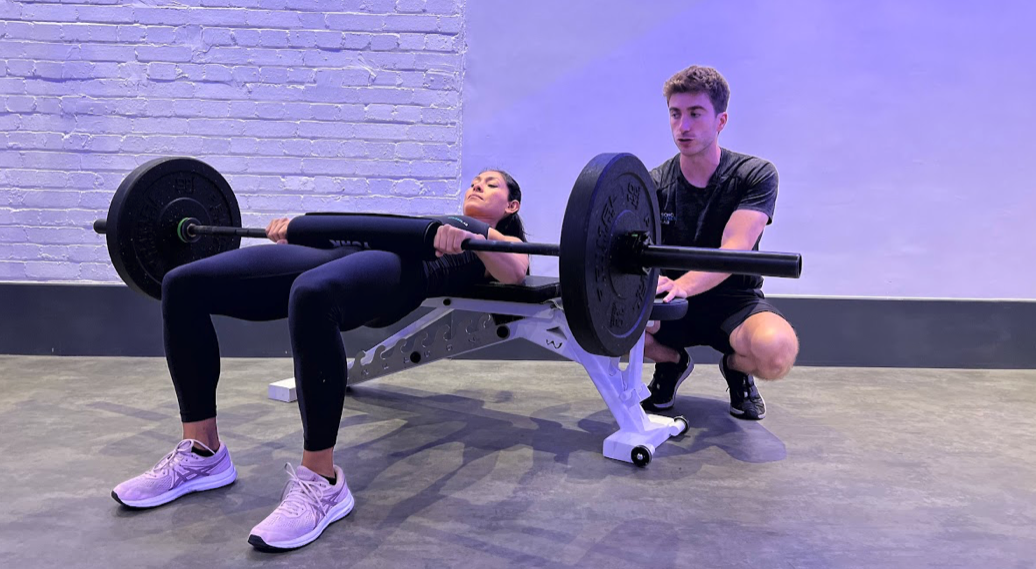
Getting your posterior chain to ‘wake up’ like this is referred to as ‘activation’. With the right equipment, you can further encourage and enhance this activation. Useful activation exercises include:
- Barbell Hip Thrusts
- Deadlift or Trap-Bar Deadlift
- Glute-Ham Raise
- Good Morning or Romanian Deadlift (RDL)
- Pull Through
Of course, these aren’t the only exercises that can help. Depending on the equipment you have available, pull ups, kettlebell swings, and the downward facing dog yoga pose can also help to activate the entire posterior chain.
The correct firing patterns for a strong posterior chain
The posterior chain should be used as “one-two-three muscle firing sequence,” – in a chain like manner.
This begins by engaging your multifidus, the deep core musculature stabilizer that attaches to your spinal vertebrae. Your glutes and hamstrings contract next – and calf muscles follow. Late-firing glutes might trigger hamstring strains and other injuries.
Before you begin any exercise – think about correct technique
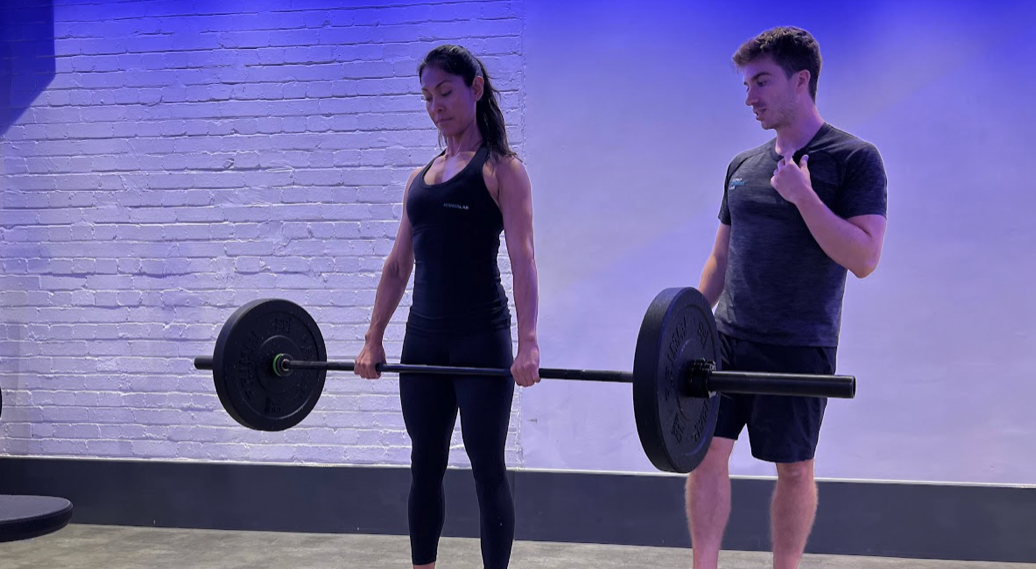
As personal trainers and coaches, we’re beside our clients at all times – making sure that their technique is exactly right with every repetition.
Unless you’ve spent a lot of time working on your posterior chain, it can be hard to know whether your technique is exactly right – but to build lasting posterior chain strength and prevent injuries in the gym, you need to start focusing on the technique of each exercise.
It’s vital to work with a trainer that knows what to look for when you take part in a posterior chain workout – don’t cut corners on this one, your long term health and wellbeing depends on it.
The same is true of exercises and stretches that can be done outside of the gym.
Stretching the lower back will help short term and it will feel temporarily good but it will not solve posterior chain problems in the long run.
Many people go to yoga, the gym, start to run… but people hunch their shoulders forwards as a result of over-using their upper trapezius muscles during yoga postures, or starting in the gym and doing too much anterior work such as bench press and shoulder press. Running is a good way to start with sport, but to many people run with the hips forward (anterior pelvic tilt) and don’t work with their glutes which then goes on to cause further problems of lower back pain.
The short version? Talk to an expert. The upfront costs might be slightly more than just signing up to a gym or yoga classes – but you’ll get to your goals far quicker with knowledge and expertise on your side.
The squat
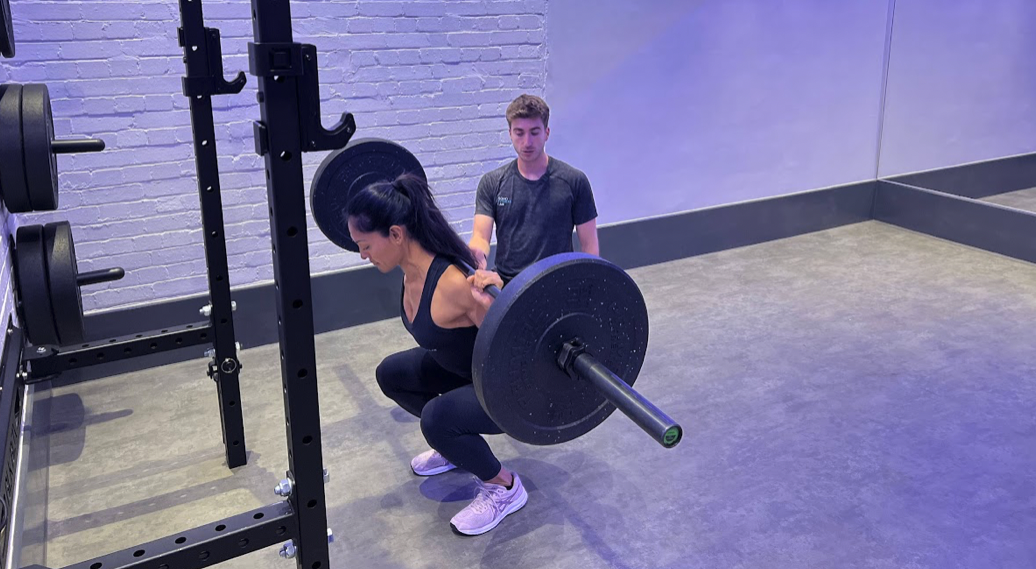
You’ve no doubt got a picture in your head of what ‘a squat’ looks like – but whether or not a squatting exercise work on your posterior chain depends on certain factors, including:
- Stance width
- Squat depth
- Bar placement
The most effective ways to squat to activate and strengthen the posterior chain include:
- A posterior chain high bar squat
- Posterior chain dominant squat
- Bulgarian split squat
- Zercher squat
The deadlift
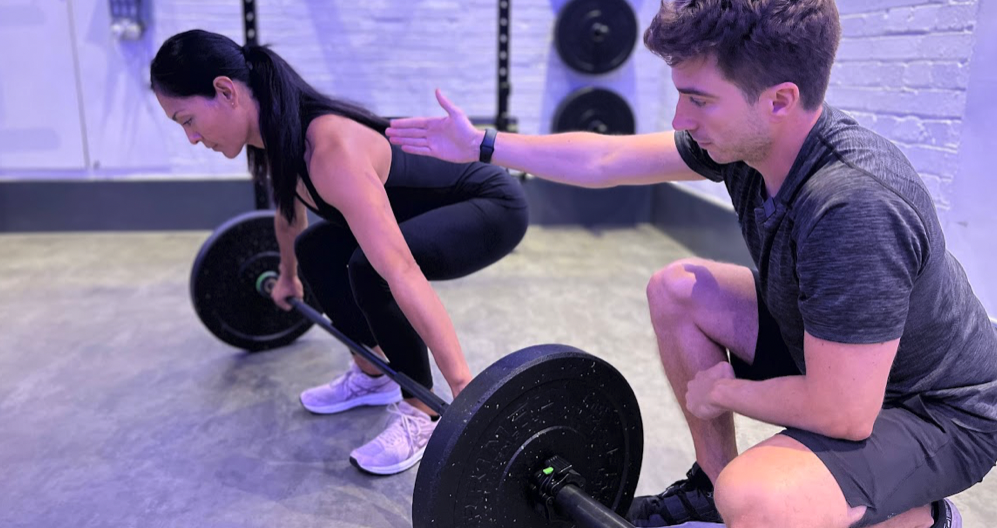
As a hip-dominant exercise, any deadlift variation works the posterior chain – but it’s absolutely essential that they’re executed correctly.
Have you seen people drop a deadlift because their lower back suddenly gives out? It happens a lot more than it should – and it’s all down to technique. Without control of the muscles in the back and the backs of the legs, too much energy can be forced through the lower back.
Believe it or not, the conventional deadlift is one of the hardest to master – and it’s often one that people will work up to, using variations until their posterior chain is firing in such a way that a traditional deadlift is safe.
Working up to a conventional deadlift, the best variations to focus on include:
- Romanian deadlifts
- Sumo deadlifts
- Snatch grip deadlifts
Different ways to strengthen the posterior chain
Everyone’s circumstances are a little different. For some people, getting to a gym or personal trainer 3/4 times a week is perfectly possible – but for others, the limitations that life or physical conditions put on us mean that this just isn’t possible.
However, one thing that’s shared by virtually everyone around the world is the need for a healthy and strong posterior chain.
Calisthenics for the posterior chain
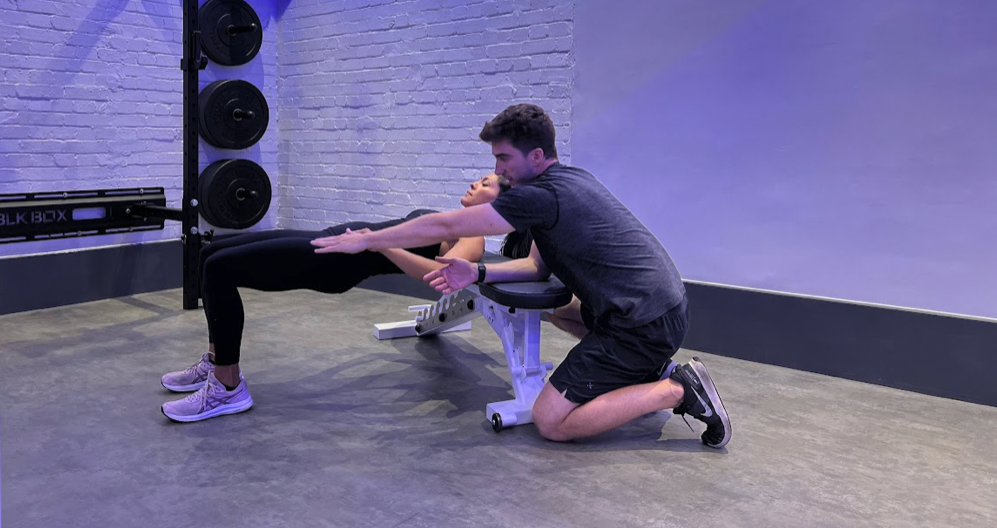
Calisthenics are highly-explosive, gymnastic-like exercises that require incredible strength and flexibility. As such, it’s no surprise to discover that they use and strengthen the posterior chain in their execution.
Since calisthenics require little or no equipment, they’re an ideal way to train if you don’t have access to a gym, studio, or any at-home equipment.
The best calisthenics exercises for the posterior chain include:
- Pull ups (with any grip variation)
- Bodyweight hip thrusts (either single or double leg)
- Table bridge
Bodyweight posterior chain exercises
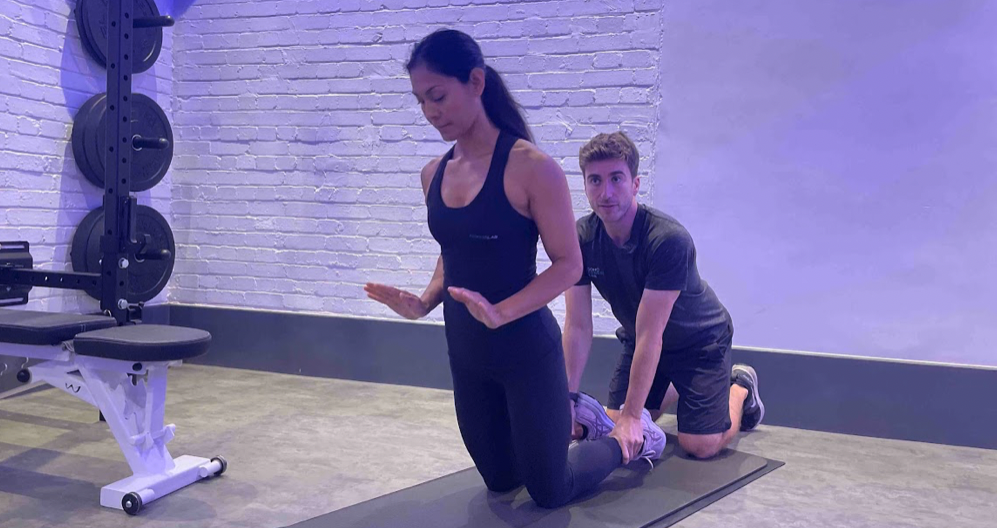
If you’re thinking that bodyweight alone isn’t enough to develop and maintain a strong posterior chain, we’d urge you to think again.
Throughout the Covid-19 pandemic, the team here at Fitness Lab (and tens of thousands of other personal trainers around the world) were delivering online personal training sessions to people who couldn’t access our studios. Needless to say, most people’s front rooms aren’t equipped with strength training equipment – so bodyweight was the only way to go.
Since the posterior chain is made up predominantly of hamstrings, glutes and back muscles – it’s practical to achieve excellent results using bodyweight.
Three of the best bodyweight poster chain exercises are:
- Partner-assisted Nordics (an absolute beast of posterior chain exercise)
- Pelvic bridge walk-outs
- Prone lying isometric hamstring pulsations
Kettlebell exercises for the posterior chain
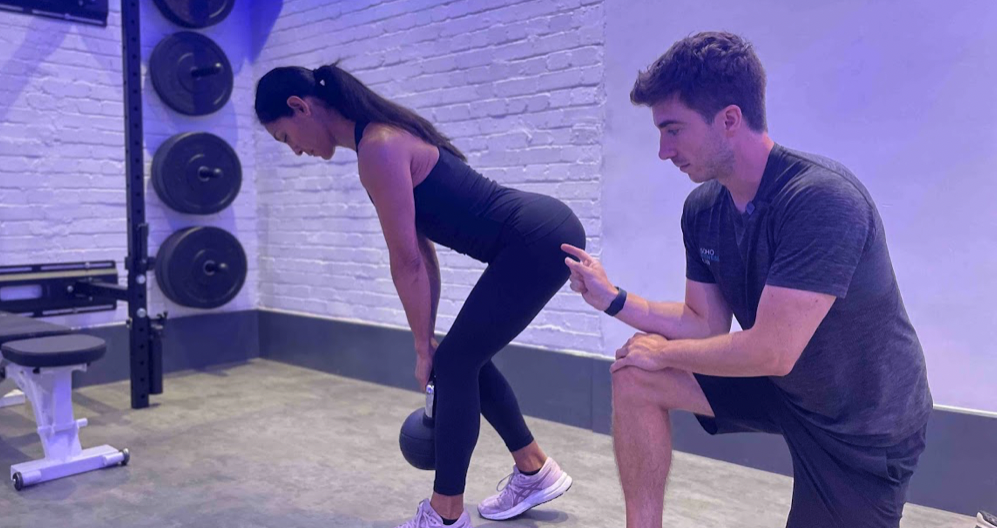
Kettlebells are a helpful addition to a posterior chain workout because they offer the ability to make more dynamic movements compared to some other pieces of equipment.
An imbalanced posterior chain can lead to issues that will hold you back – both in terms of your training and day-to-day comfort and functional movement. For certain exercises, kettlebells will help you either avoid these imbalances or help you correct ongoing issues.
The following exercises are excellent additions to your workout and will help you to strengthen the posterior chain muscles and work on putting right imbalances that may exist:
- Kettlebell swing
- B-stance Romanian deadlift
- Gorilla row
Posterior chain glute exercises
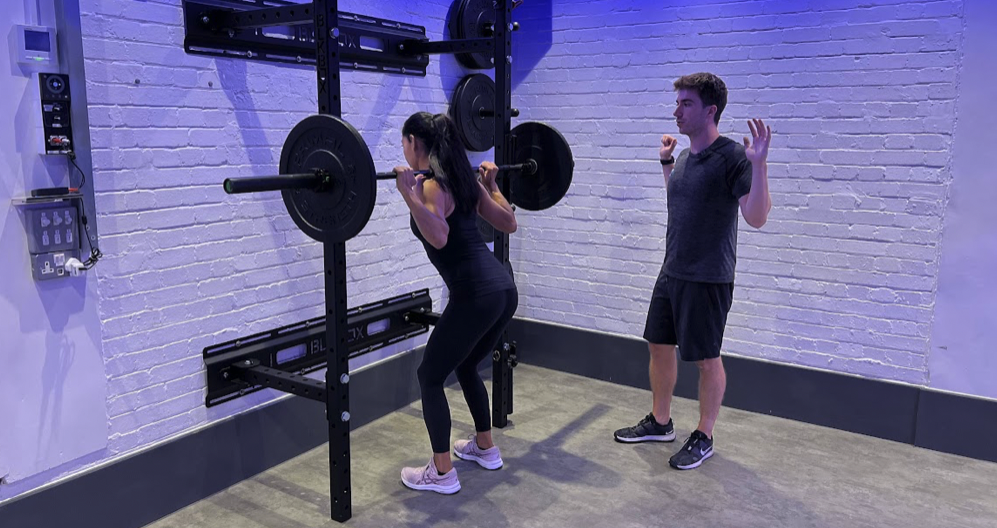
It’s commonly known that the Gluteus Maximus is the largest muscle in the human body – and with the other glute muscles (The Gluteus Medius and Gluteus Minimus) they truly represent the core powerhouse within the posterior chain.
The stronger your glutes are, the less likely you are to get back or knee pain – so training the glutes is an essential part of any workout.
Some of the most effective exercises for this muscle group are:
- Barbell hip thrust
- Rear foot elevated hip hinge
- Barbell good mornings
Posterior chain workouts with resistance bands
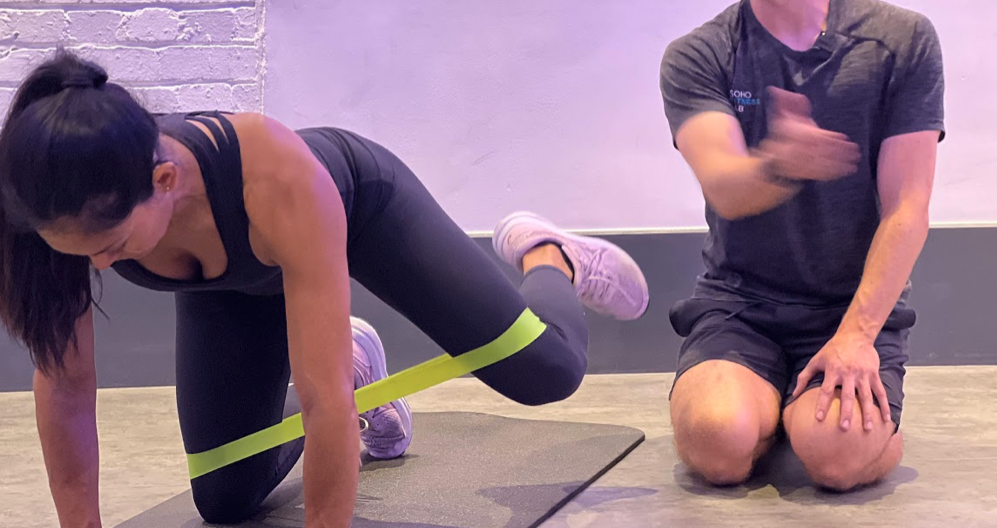
Resistance bands are probably the most cost-effective and practical kind of workout equipment you can have in your home. With a small investment, you can use a set to expand your posterior chain workouts significantly – but you have to use them effectively.
Some of the most effective resistance band workouts for the posterior chain are:
- Banded Romanian deadlift with lat activation
- Banded bent-over row (plus iso hold)
- Banded pull apart
Posterior chain dumbbell exercises
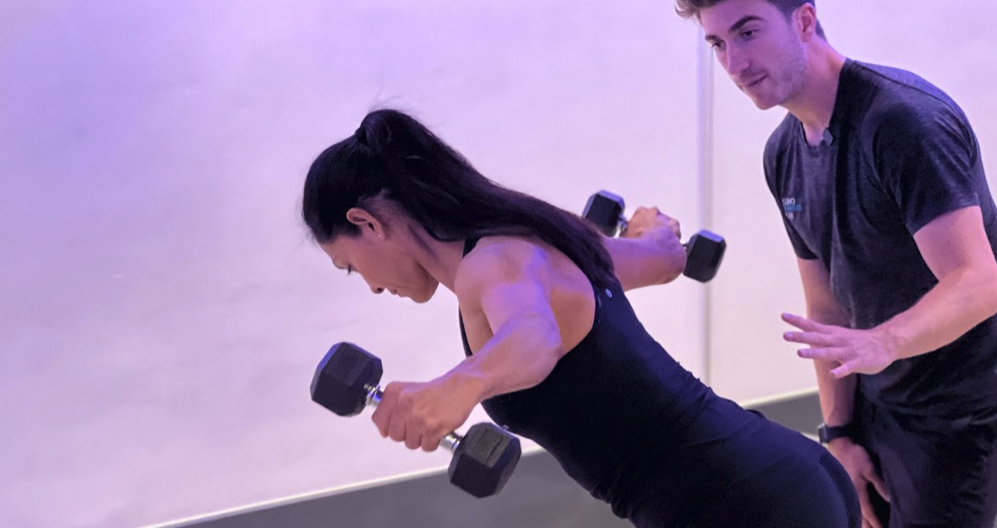
When you read about deadlifts and squats, your mind immediately takes you to exercises that put an even force on both sides of the body – but it’s rarely both sides of the body that are exerting equal force as you work through the range of movement that’s required.
Why? Well, muscle imbalances are extremely common. They can occur for countless reasons – from the fact that we have a dominant hand right through to the shoulder that we carry a bag on.
When you work out with dumbbells, you are forced to exert the same amount of pressure on both sides. By isolating limbs with dumbbells, you’re performing ‘unilateral training’ – a way of working out that corrects muscle imbalances and can help to reduce that chance of injury.
Unilateral posterior chain exercises ensure that both sides of the body gets equal attention.
To make this happen, there are a number of effective exercises you can try, including:
- B-Stance Romanian Deadlift
- Dead stop single arm row
- Bulgarian split squat
We’ve created a dedicated blog called The Best Posterior Chain Dumbbell Exercises for you to explore if you’d like to learn why we chose these exercises and how to execute them perfectly.
Posterior chain cardio exercises
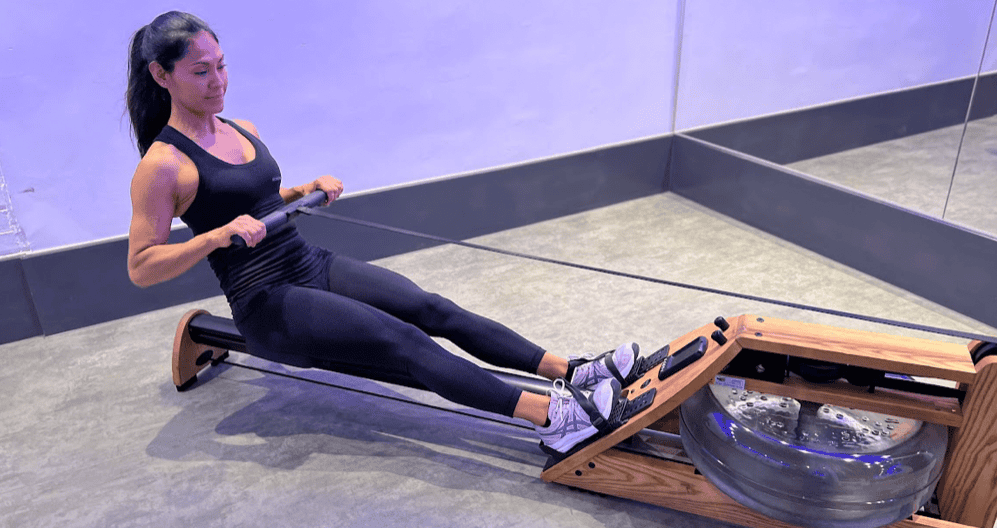
Look at any ‘strengthening’ exercise program and you’ll almost exclusively see workouts that are based around weight or resistance – but very little in the way of cardio.
Understandable really, impressive glutes and powerful calves are rarely seen on marathon runners – but that doesn’t mean there isn’t room for cardio when it comes to switching these muscles on and getting them ready for the weight that they’re about to move.
Cardio exercises are an important part of a posterior chain workout – the right ones, programmed in the right way, will help to make sure you’re warmed up correctly before you reach for the kettlebells.
Consider adding the following cardio exercises to your posterior chain programmes to make sure your muscles are activated before you start with the resistance bands or weights:
- Rowing
- Versa climber
- Gluted banded interval warm up
To take a detailed look at why we’ve chosen these exercises and a step-by-step on how to do them – check out or dedicated blog: The Best Posterior Chain Cardio Exercises.
Posterior chain barbell exercises

It might feel reassuring to know that the Smith machine at your local gym will help to guide you through your squat movements – but when you use machines like these, you’re compromising some fundamental parts of using a barbell.
Firstly, a machine guides your form – sometimes for better but, more often, for worse. Secondly, when even a small part of the full range of movement is taken away, you don’t make the same mind-muscle connection in your brain – so poor form is more likely to become habit.
Barbells might look slightly intimidating if you’re new to posterior chain workouts – but don’t panic, a good personal trainer will always focus on helping you develop perfect form before you even consider adding significant weight.
Whether you’re starting out with guidance around barbell exercises or you’re familiar with the equipment and feel ready to up your weights, the following exercises are sure-fire ways to strengthen that posterior chain:
- Barbell hip thrust
- Conventional deadlift
- Pendlay row
Would you like to learn more about these exercises and how they can help your posterior chain? Check out our dedicated blog: The Best Posterior Chain Barbell Exercises – we’ve got video walk-throughs for each of the exercises.
Posterior chain exercises for different goals
In this section, we’ll take a detailed look at different ways of working the posterior chain depending on your goal, your sport, or your unique circumstances.
The best posterior chain exercises for wheelchair users
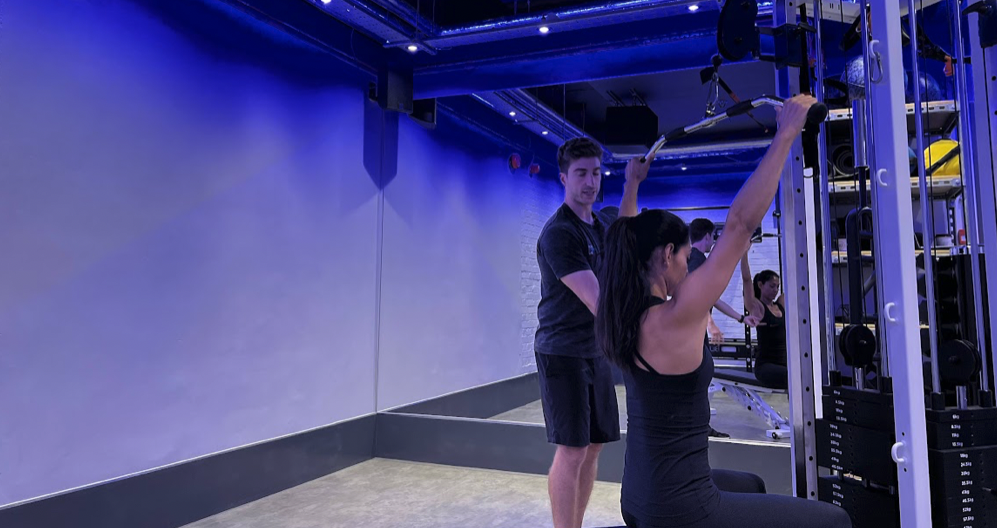
Thankfully, social media and a mainstream media focus on disability sport has helped to shine more of a light on groups of people who are often overlooked when it comes to working out.
Wheelchair users are one of those groups – and, as specialist physios and wheelchair athletes will tell you, there are certain upper body strength muscle groups that require focus if you’re operating a wheelchair. The posterior chain is high on this list.
Some posterior chain exercises that people who use wheelchairs are likely to see a benefit from include:
- Lat pulldowns
- Reverse flies
- Cable/banded rows
Needless to say, everyone’s physical condition and abilities are a little different – so it’s essential that you talk one-to-one with a specialist trainer or medical professional to help you decide the best kind of exercise program for you.
The best posterior chain exercises for runners

Running is all about constant forward propulsion – and this almost exclusively comes from the muscles that make up the posterior chain.
While the muscles of the back straighten and extend the spine allowing the limbs to move fluidly, the glutes are working to extend the hips, increasing stride length. As you work your way down the legs, the hamstrings are stabilising the knees and the calf muscles are extending the ankles to help transfer force into motion.
Without a strong posterior chain, runners are at risk of a series of injuries – from torn hamstrings and calf muscles right through to debilitating knee pain that comes from imbalances in strength and stride.
At our dedicated running clinic, we often focus on posterior chain workouts – with the following exercises as fundamentals:
- Read foot elevated hip hinge
- Trap bar deadlift
- Single leg hip thrusts
The best posterior chain exercises for sprinters

If you’re a sprinter or aspire to be one, you’re probably going to get bored of hearing just how important the posterior chain muscles are in your chosen sport.
Put simply, every single one of the muscles in this group is going to contribute to the explosive power you need to make you fast. Weakness or imbalance will almost certainly result in an injury sooner or later – and trust us, becoming best-friends with a posterior chain workout is infinitely better than dealing with a hamstring tear!
If you want to make sure you’ve got a bullet-proof posterior chain, you could do a lot worse than focus on the following exercises as the core of your workout:
- The deadlift (and variations)
- Barbell hip thrust
- Romanian deadlift
- Reverse lunge slider
The best posterior chain exercises for seniors
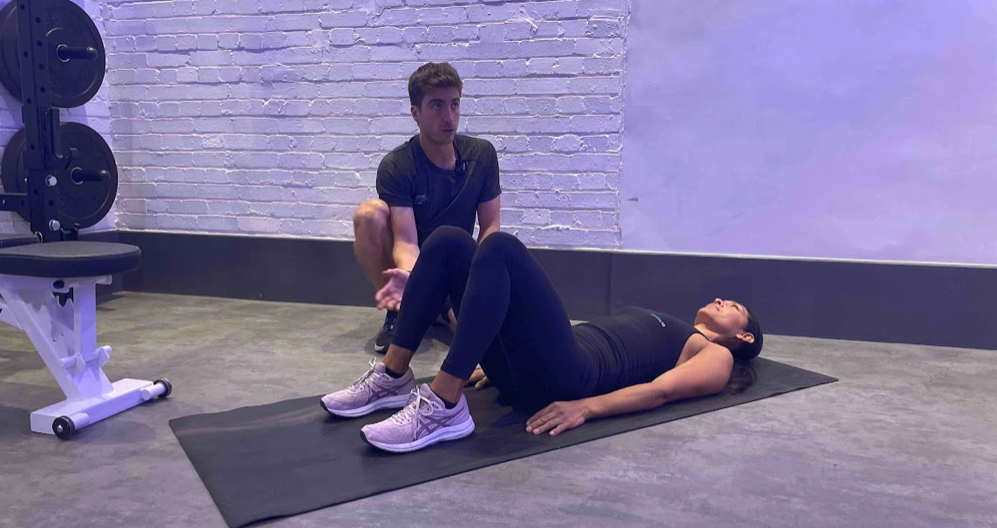
At Fitness Lab, we don’t like to stereotype – after all, there are plenty of 80-year olds that can outrun and outlift 18-year olds.
That said, our bodies do change as we get a little older – and as the most significant muscle group in our bodies, the condition and strength of the posterior chain can change drastically, especially if it’s an area that you only start to focus on as you get older.
Working on the posterior chain will almost certainly help you counteract some of the ‘typical’ signs of aging – namely, improving balance and coordination, reducing weight-gain and easing aches and pains – specifically the low back pain that’s associated with a lifetime of sitting and standing.
Some of the most effective exercises for older people looking to exercise and strengthen the posterior chain include:
- Glute bridges (with opposite-side reach overs)
- Bodyweight Romanian deadlift with band and forward lean
- Spinal flexation-to-extension forward and backward step
The best posterior chain exercises for posture
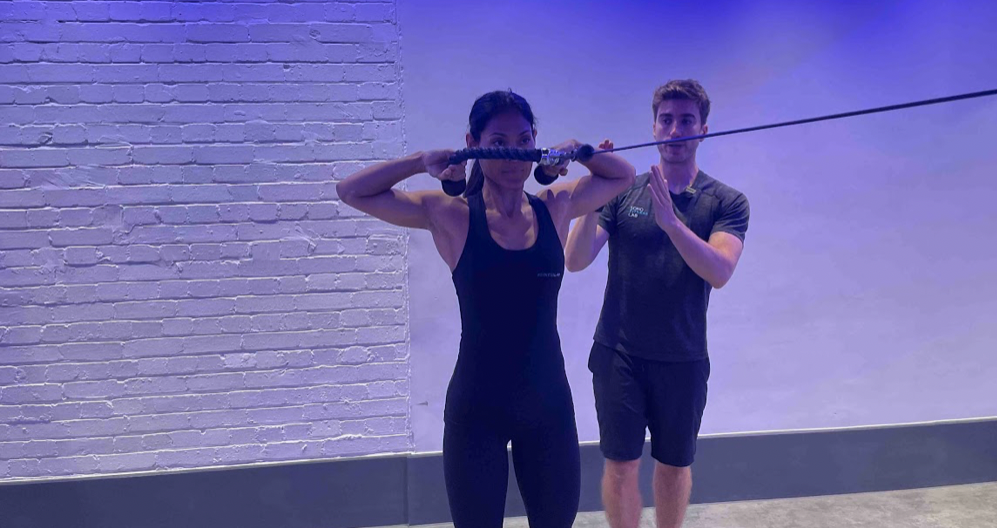
Posture is a topic that divides opinion in the world of personal training. While some people will tell you that there’s ‘good’ or ‘bad’ postures – the truth is a little more complicated.
There are very few postures that are inherently ‘bad’ – instead, it’s useful to think of any posture that you hold for long periods of time to be unhelpful when it comes to the posterior chain and fully functional movement.
So, sitting in a chair isn’t bad – but sitting in a chair all day without exercising a full range of movement is likely to cause pain, stiffness, and stress on parts of the body that aren’t designed to be without movement for long periods of time.
As such, a ‘proper’ posture is going to depend on you and your day – but whatever that looks like, a strong posterior chain is likely to have a positive effect when it comes to the stress that prolonged periods with no movement brings.
Some of the most popular exercises for people who don’t experience the full range of movement in their day include:
- Cable face pulls
- Glute bridge
- Barbell Romanian deadlift
The best posterior chain exercises for knee pain
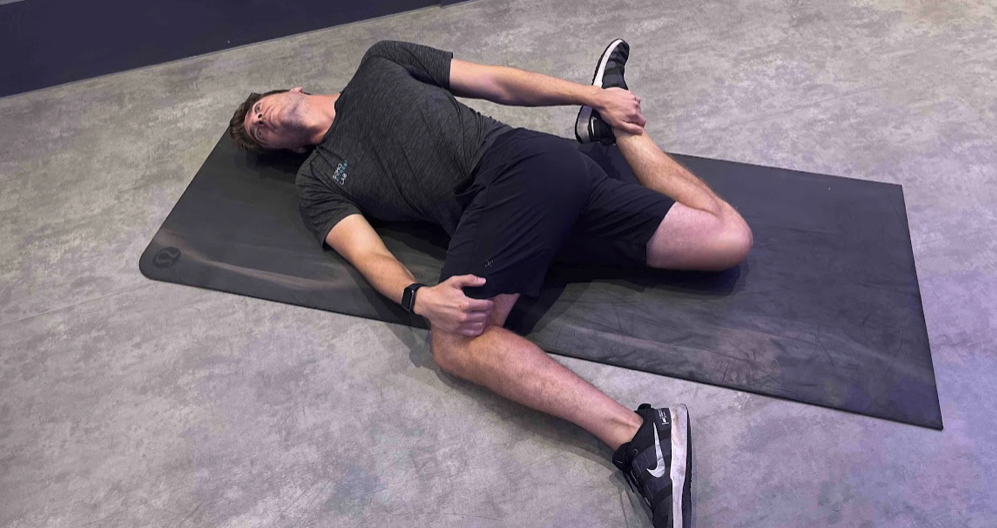
You might not consider the muscles that largely make up the backside of the body to be important ones when you’re dealing with knee pain – but in actual fact, the posterior chain is equally important as the anterior chain when it comes to properly functioning knees.
Although there is often more to knee injuries and knee rehabilitation than just strengthening the muscles responsible for balance in the knees – it almost always a part of resolving any pain in the area.
Common injuries such as ACL (Anterior cruciate ligament), torn meniscus, patella tendinitis, Iliotibial band syndrome or general hip and foot pain can all benefit from the use of posterior chain exercises when the time is right.
Typically, an exercise program to treat knee pain will include a focus on strengthening the Gluteus Medius muscle.
For a detailed look at the exercises we recommend for knee pain, take a look at our dedicated blog: the Best Posterior Chain Exercises for Knee Pain – which includes video walk-throughs of to help you get your technique exactly right.
The best posterior chain exercises for jumping
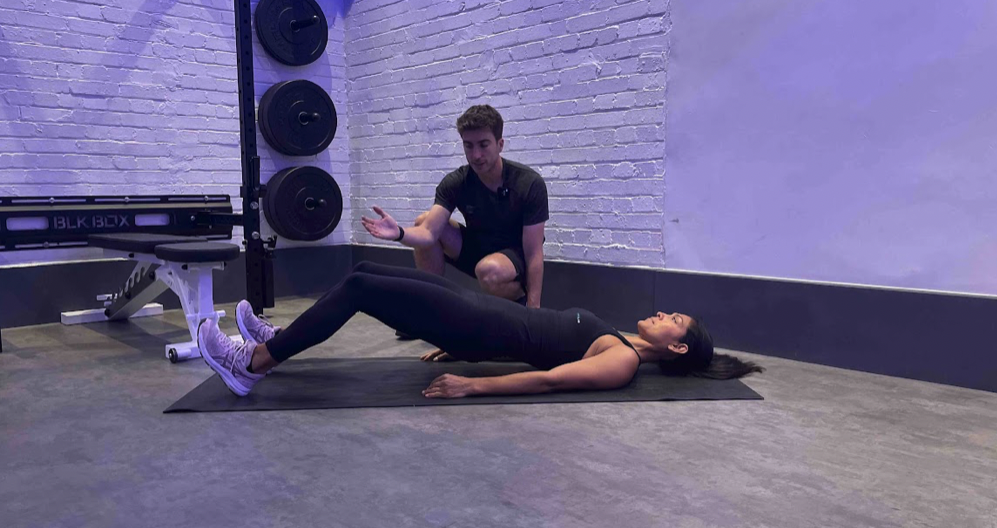
If any part of your sport or training involves jumping, it’s essential that the posterior chain is strong enough to take the tremendous forces that you exert on yourself – both launching and landing.
It’s the posterior chain muscles that are on show when you see track and field athletes at the Olympics; powerful glutes, well-developed calves, and strong hamstrings.
Clearly, these are posterior chains that have been developed over a long period of intense training – but you don’t have to be a professional sportsperson to get stronger and more powerful for jumping.
Instead, focus on the following exercises:
- Supine Glute Bridge
- 45-degree hyperextensions
- Barbell Romanian deadlift / Trap bar Romanian deadlift
For a detailed look at how to execute these movements and some of the rationale behind why it’s important to improve this ability, check out our blog: Best Posterior Chain Exercises for Jumping.
The best posterior chain exercises for beginners

If this is the first time you’ve considered working on your posterior chain, the prospect can be a little intimidating. We’ve listed countless exercises here – all designed for slightly different circumstances or goals.
So, where should you begin with all this information if you’re new to working out or you’re just shifting your focus to this muscle group?
The answer is with simplicity and form.
Without understanding the correct way to move, you could go and grab a barbell and take a shot at your first conventional deadlift and end up injuring yourself for weeks – if not months. These complex movements become infinitely easier when you’ve started strengthening your posterior chain first – prepping it for bigger, heavier challenges when the time is right.
With this in mind, consider these exercises as the perfect way to start improving the strength through your posterior chain:
- Bodyweight pelvic bridge
- Long lever pelvic bridge
- Split stance single leg deadlift using dumbbell
- Prone lying isometric hamstring squeeze
If you’d like a detailed look at how to perform these exercises – and some of the rationale behind why we chose them – explore our dedicated blog: Best Posterior Chain Exercises for Beginners
The best posterior chain exercises for back pain

Back pain is an extremely complex topic – one that some medical professionals dedicate entire careers to understanding. As such, it’s hardly surprising that the general public has some misunderstandings when it comes to the issue.
There’s a tendency to think of exercise as something to steer clear of when you experience any kind of back pain. For some people, this is the right course of action – but for others, it’s strengthening of the back that actually helps to ease pain, in more ways than one.
It’s absolutely essential that you talk to a medical professional about your back pain before you start any exercise – but, assuming you get the green light, there are some outstanding exercises that can help you overcome physical and psychological factors that are keeping your back from getting better.
Some excellent posterior chain exercises for back pain include:
- Kettlebell B-stance deadlift
- Kettlebell swings
- Bent-over rows
Why not take a more detailed look at these exercises and our reason for choosing them in our specialist blog: The Best Posterior Chain Exercises for Back Pain?
Exercising the posterior chain at home
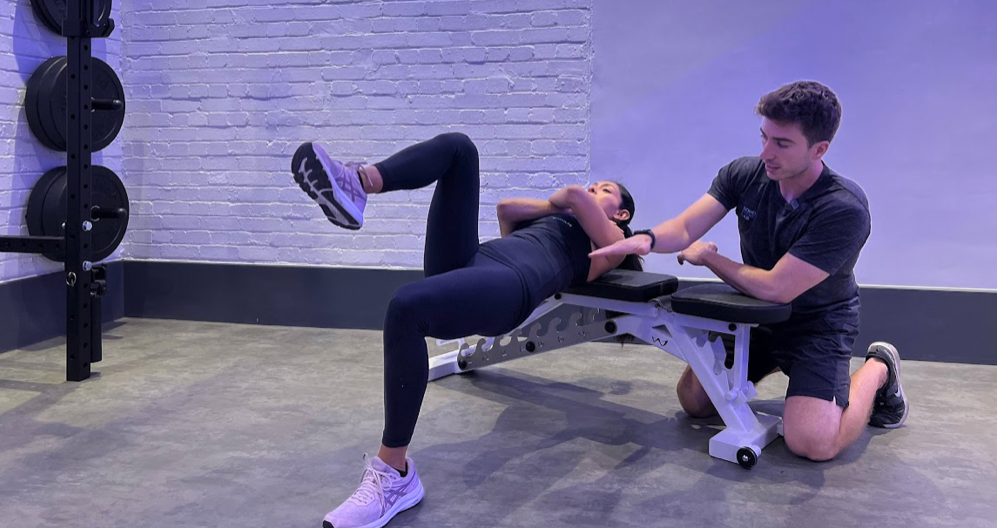
You hardly need reminding that we’ve spent much more time at home in the last couple of years than most of us would have liked.
This has led to an explosion in people working out from home – both because gyms and studios weren’t open, and we discovered that staying physically fit helped us keep tabs on our mental well-being – even when the world was feeling like an unfamiliar place.
Over the course of various lockdowns and restrictions, the team of personal trainers here at Fitness Lab delivered thousands of online personal training sessions. And, since very few people have an Olympic barbell in their living rooms, we’ve employed some innovative ways to exercise the posterior chain without the need for expensive equipment.
Some of the most popular and practical at home posterior chain exercises include:
- Hip thrust ISO holds
- Prone towel pulldowns
- Read foot elevated hip hinge
For a detailed look at how to perfectly execute these movements (including some walk-through videos!) – why not explore our dedicated blog: The Best Posterior Chain Exercises at Home
Posterior chain stretches
When the glutes are weak, the glutes, hamstrings and lumbar erector spinae muscles are placed under greater stress. The main muscles which work to stabilise and extend the hip, stop doing their work and become synergist, which means that the “helper” (synergist) becomes the primary mover. The hip flexors then become overactive, and when this happens, there is marked anterior tilt of the pelvis and a lordotic curve at the lumbar spine.
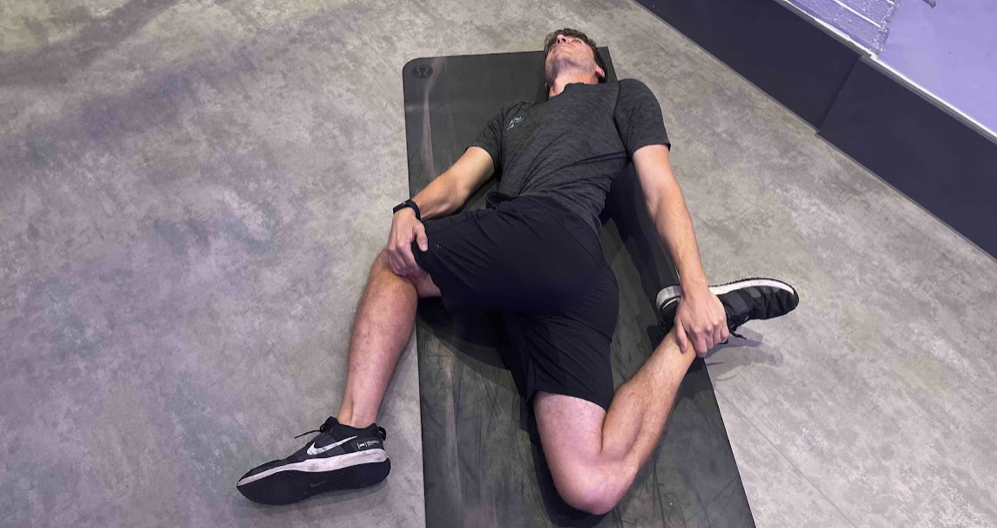
Imagine a person who tries to stand straight but the seat sticks out, the hip is tilted forward. This can lead to a chronic lower back pain problem.
That’s why stretching is a great way to relax the overactive hip flexor and to correct an anterior pelvic tilt and enable greater range of motion in the hips – it’s also an essential part of keeping hip joints healthy.
Starting position: Go in a lunge position and bring your torso upright. Have one knee directly below your hip and the other leg forward with your knee directly above your ankle. Extend the hips forward and tighten your glutes. The front knee does not extend past your front foot. Hold the stretch for 20-30 seconds. Repeat 2-3 times with each leg.
Are you struggling with a weak posterior chain?
Strong posterior chain muscles are a non-negotiable when it comes to athletic movements – and if you want explosive power, these core muscles need to be in your mind with every workout and training session.
If you’d like to explore the posterior chain or posterior chain exercises in more detail, we’d be delighted to help. We’ve answered some Posterior Chain FAQs in our blog – but please don’t hesitate to get in touch with the team at Fitness Lab, who will be more than happy to answer your questions and tell you more about what we can do: hello@fitnesslab.fit
Sources
- http://www.mensfitness.com/training/workout-routines/dumbbell-romanian-deadlift
- http://www.mensfitness.com/training/workout-routines/trap-bar-deadlift
- http://www.mensfitness.com/training/pro-tips/25-ways-you-dont-want-train-should
- https://www.pinterest.com/pin/57632070208904104/?lp=true
- http://coach.nine.com.au/2016/11/15/16/08/why-instagram-butt-is-actually-anterior-pelvic-tilt
- http://boxlifemagazine.com/strengthening-your-posterior-chain/
- http://healthyliving.azcentral.com/exercises-fire-posterior-chain-19505.html
